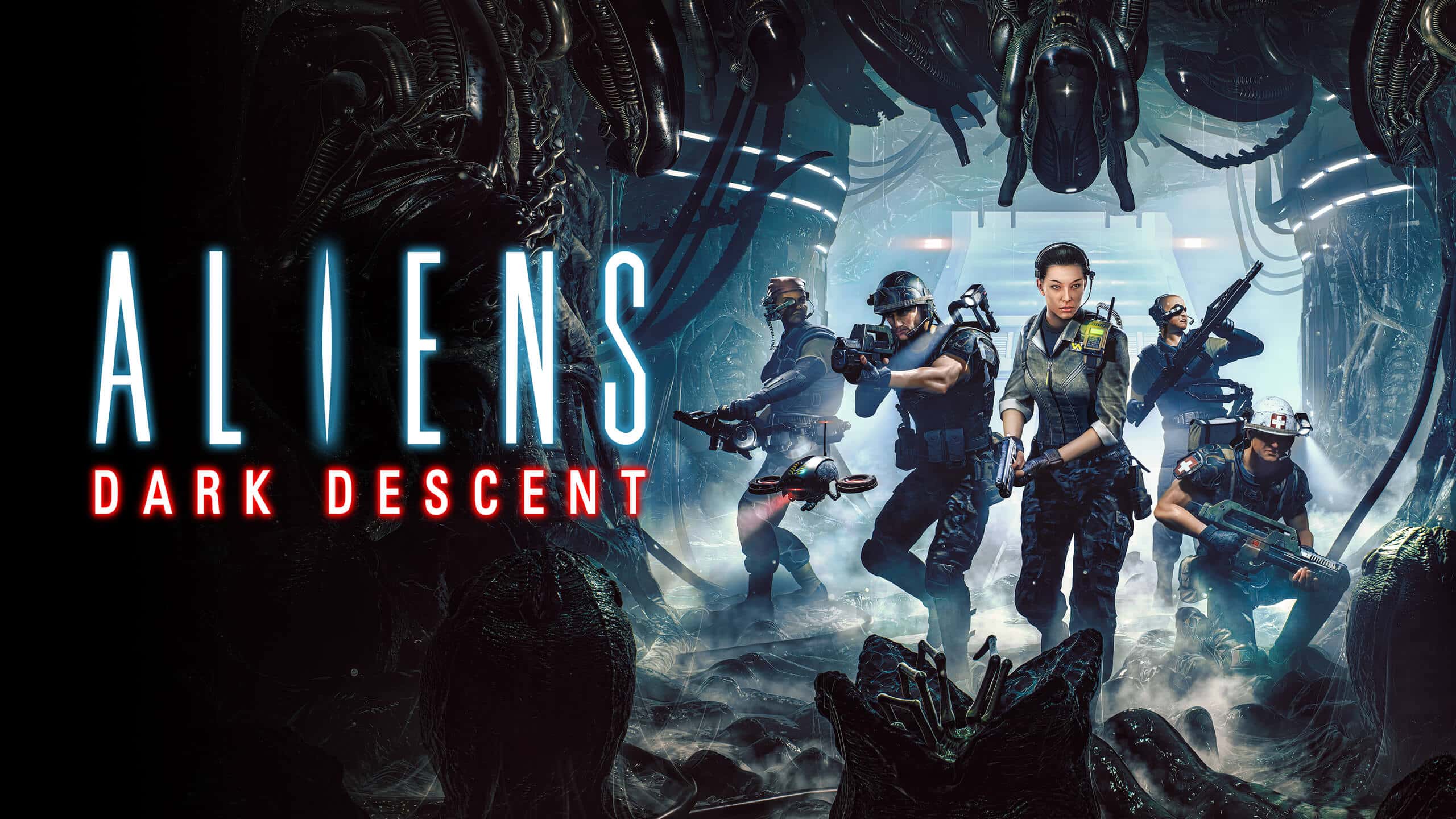Over the years the iconic Alien film franchise has been adapted into many video games, spanning multiple genres to varying levels of success and acclaim. 2023 has added strategy to that list with the recently released Aliens: Dark Descent, blending action and strategy elements that task the player with managing a squad, and their physical and mental wellbeing, all while maintaining awareness of their surroundings as they conduct their missions and eliminate a relentless and exponential Xenomorph threat.
The game sees the player take control of a squad of Space Marines in a fight against another Xenomorph infestation, around 19 years after the original films. From the beginning, an incredibly atmospheric tone sets the scene for the player as tensions rise and fall as frequently as the menacing Xenomorphs themselves, offering players little respite between encounters. Aliens: Dark Descent challenges players to think, both prior to and throughout each mission asking players to train, customise and manage deployed squads, manage marine health and well-being, execute commands on the fly and extract when required. Collecting intel and resources, and escorting survivors breaks up the constant threat of death, but blasting hordes of Xenomorphs is frequent and presents a constant challenge, even when playing on the easiest difficulty setting.
Aliens: Dark Descent takes players through a 12-mission campaign lasting nearly 20 hours, several of which were spent by the author replaying scenarios due to poor resource and squad management due to inexperience with the genre. This didn’t feel frustrating though, it felt rather rewarding learning to manage these types of systems and develop a stronger grasp on the genre, leading to moments of satisfaction when that one tricky part eventually falls into place, and the player survives the seemingly impossible odds thrown in front of them. Even with this authors inexperience with the genre, the length of the missions still feel too long, even more-so for players that may struggle to grasp the resource management elements associated with the genre. The fact that you can extract and rejoin the mission later on with the same progress does assist with this, somewhat.
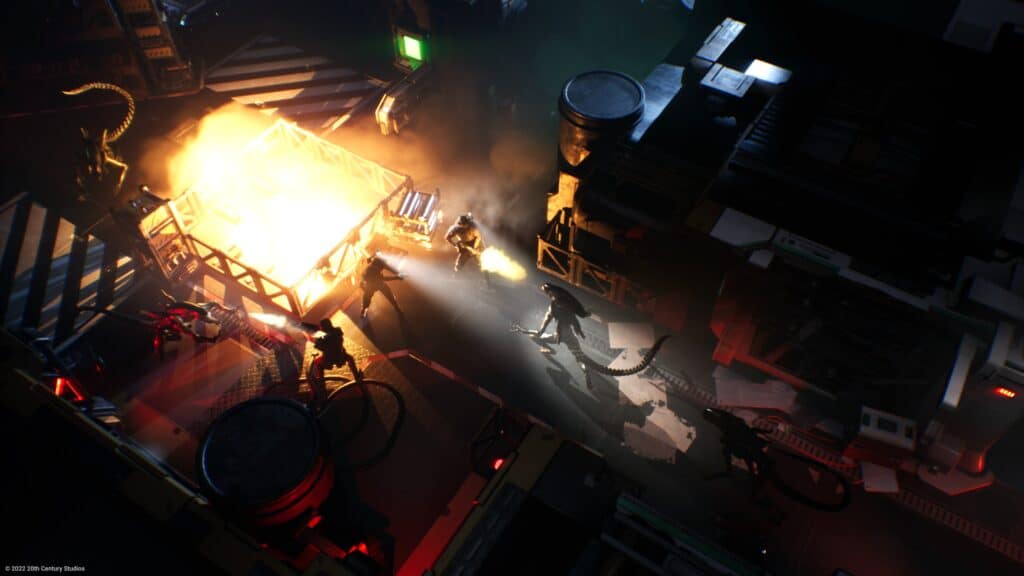
Missions are represented in a non-linear format that has both pros and cons regarding their structure. This allows the player to tackle each objective in a way that they see fit, instead of providing one option and leading the player through the journey. Not every player’s preference but one that gets the player to assess the situation and plan accordingly. One big difference between Aliens: Dark Descent and other games is that i at any point the player can request an evac vehicle, or travel to one that is already present and retreat to the USS Otago. The USS Otago is essentially the hub/overworld in Aliens: Dark Descent. Here the player can manage their squad by treating physical injuries and mental health in the medical bay, craft and equip new gear and equipment for the soldiers that comprise the unit or customise other aspects of the squad. Returning to the Otago during a mission will also extract survivors and allow the player to recompose before returning to right where they left off, functioning as a customizable checkpoint for the player. The option to take a breather from the action of the mission is a cool inclusion and breaks up some of the lengthier missions by allowing players to look after the squad and kit them out with the best tools for the job. When the player finally decides to return to the mission, their progression will remain intact and all previous explored areas, collectibles and objective progress will be exactly as it was prior to extraction.
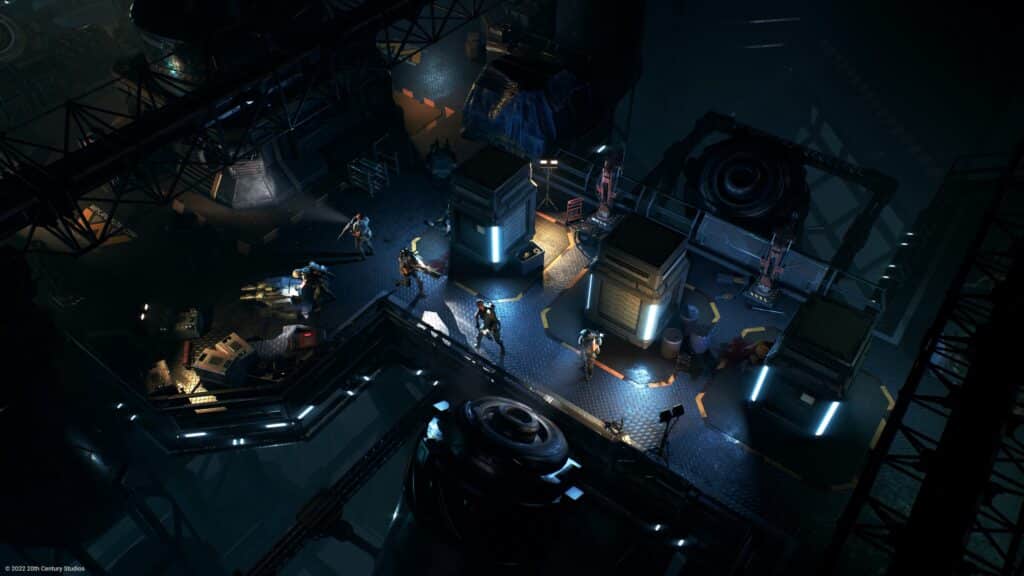
Doing so does requires the player to rest for an in-game day which escalates the Xenomorph threat, compromising the player’s grip on the situation that in turns may lead to a significantly more hostile environment upon return. On the plus side, the squad can be sent on a separate, standalone deployment that is conducted autonomously and immediately which may offer the player rewards, potentially at the cost of the players resources. These smaller excursions can be done at any time on the Otago, with each advancing time to the next in-game day. This will however further increase the Xenomorph threat, so deployments aren’t to be conducted lightly or without calculation.
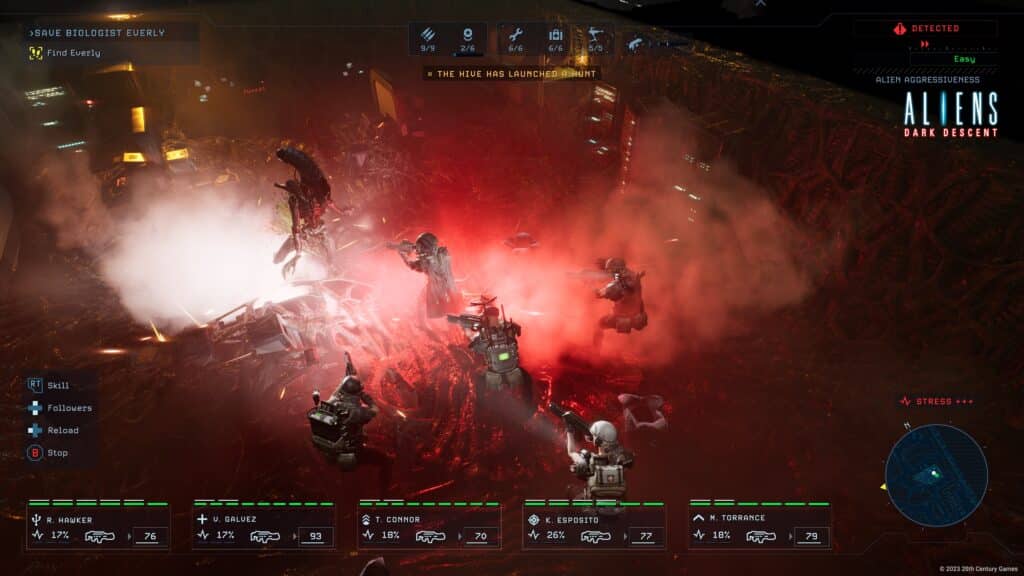
Genre fans will certainly feel more comfortable with this new direction for the franchise while inexperienced players will face off against some challenging odds that are satisfying to overcome.
Played from a top-down perspective that can be zoomed in and out of with basic camera controls, the four-unit player-controlled squad move as a team rather than independently. The exception being opening loot containers, collecting research, and interacting with objects or other characters. This limited mobility initially feels restrictive, but after a bit of time it becomes apparent how this idea adds to the tension, focusing your attention on a singular area amplifies the stress and pressures of an unexpected Xenomorph attack. The idea of being able to scatter the units so they don’t all get picked off at once would actually seal their fate faster, so the fact that they move as one not only increases their chances of survival but also introduces genuine concern that they may not just fight together, they might die together too.
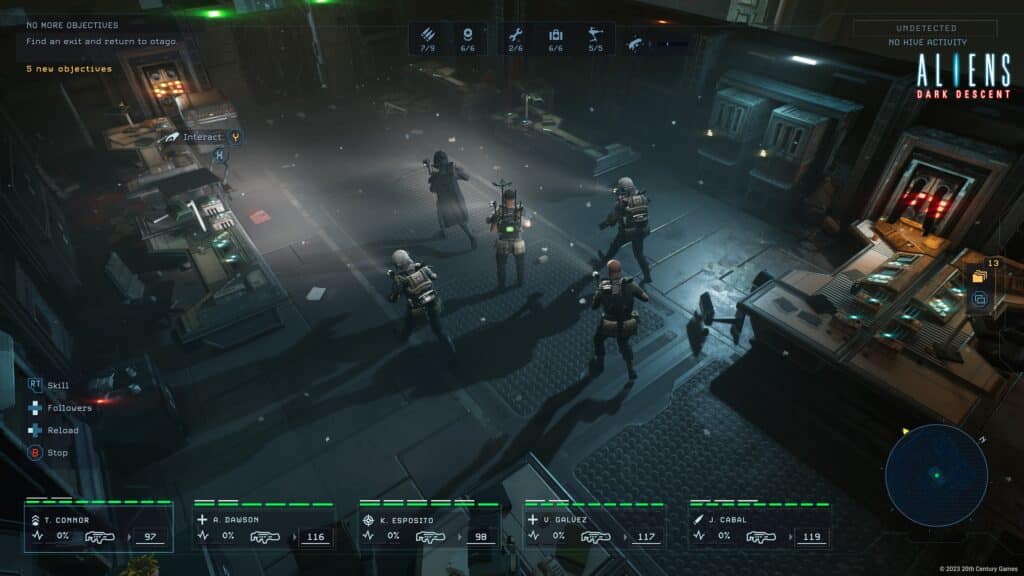
Squad management is a big part of this game and will see the player manage, and sometimes micro-manage their soldiers through the journey. Upgrading soldiers and assigning physicians to take care of wounded soldiers is a vital component to managing the squad and the chances of their success. Some actions such as treatment though may keep them out of action for multiple days and will render them unavailable for when the player decides to return to the battle. The other side to this is much worse, losing a marine on the battlefield is much worse as death is permanent and the player will then lose access to the marine and their skills. All these decisions add meaningful layers to the experience that require careful consideration and calculated planning to prevent the squad from being under-prepared for each upcoming mission. The very nature of Aliens: Dark Descent is about weighing up the risks versus the rewards, and this ultimately leads to a very rewarding and satisfying sense of accomplishment with each mission completion.
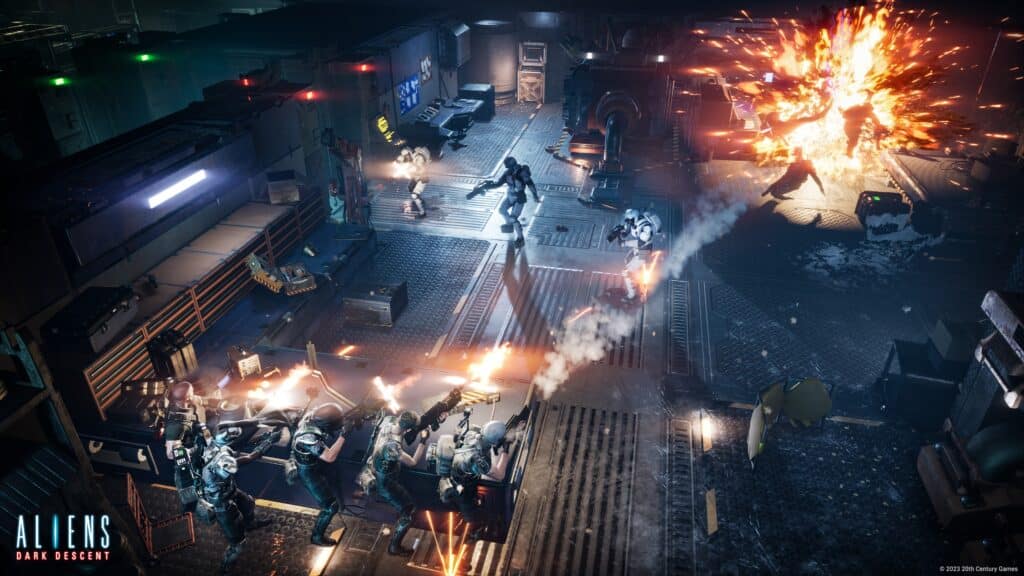
Level design is tailored to allow players to go guns blazing, which of course is incredibly risky considering a single Xenomorph is a powerful threat, and there will be countless scenarios where they attack as a pack or arrive in wave-based formations. The intended playstyle is stealth driven, encouraging players to hide the squad in cover, take note of their surroundings, weld doors shut to create temporary safe havens that can eventually be destroyed by the alien hordes. Going loud or adopting a stealthy approach are both fun styles to experiment with, and the emphasis on stealth elevates the tension in an enjoyable manner that adds layers of depth to the atmospheric nature of the franchise.
A coordinated and calculated approach allows the player to attack a scenario with all tools on offer, and it’s not just guns that each marine brings to the battle. Marines can be commanded to lay down turrets, motion trackers, provide suppressive fire and many additional commands that can be unlocked via weapon research and character upgrades on the Otago. While the squad will automatically shoot and defend themselves, individual enemies can be manually targeted to focus fire on specific threats, essential against some of the larger boss type enemies in group encounters. The freedom to take control of the combat is liberating and compliments the automatic defensive tactics to a degree that emphasises the player’s control over the squad’s chances of survival. A lot of encounters will become trial-and-error based on the decisions made along the way and this only heightens the importance of every tactical decision and execution of stealth versus raining down hell at the first sight of trouble.
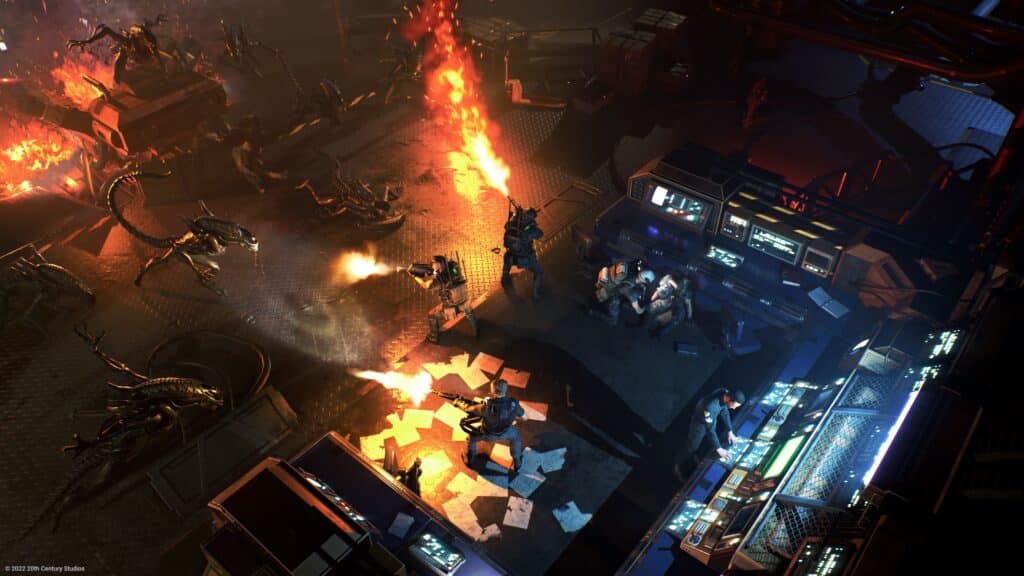
There is a good story present in Aliens: Dark Descent, but the characters may not be truly memorable. Largely delivered via dialogue and rather static scenes, the narrative unfolds from the perspective of dual leads, an administrator, and a hardened space marine. Their personalities and relationship aren’t particularly fleshed out and the opportunity to form any type of emotional or sympathetic relationship with them is all but impossible. Main characters aside, the story itself is certainly unique and never feels like its re-treading previously explored ideas from the numerous films and games that have come before. Definitely nice to see from a franchise that has existed for more than 40 years.
Stunning environmental detail and effective use of lighting and environmental effects, fog in particular, illuminate the dark, gritty world and its environments and renders a haunting, beautiful battleground to embrace the incredible atmosphere and tensions that accompany the alien threat. The interior and exterior designs are an authentic representation of the adored franchise and the detail of the Xenomorphs only solidify the tone of the established lore of the last several decades. Epic sound design punctuates the action with grisly sound effects and an effective score paints a world of hopelessness and terror that the Xenomorphs amplify tenfold with their menacing presence.
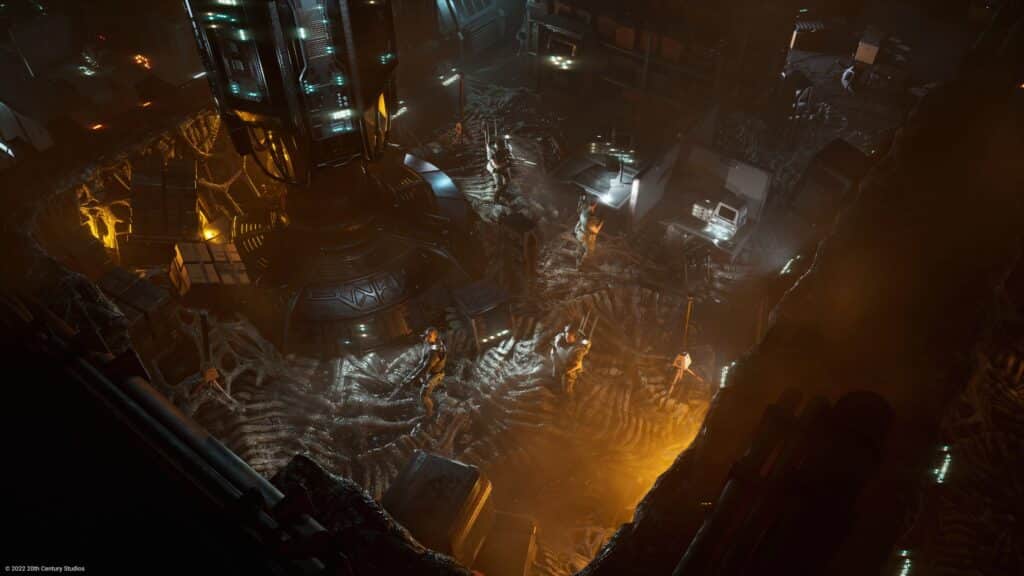
Review by Games of Dayne
Games of Dayne’s written works can also be found at his website here.
* A digital code for Aliens: Dark Descent was kindly provided to Xbox Gamer Dad for the purpose of this review. Aliens: Dark Descent is available right now *
Summary
Aliens: Dark Descent is an interesting direction for the franchise and it's one that works well, despite somewhat of a learning curve for players not too familiar with the genre. The real time strategy elements of Aliens: Dark Descent introduces tension that amplifies the terrifying Xenomorph threat with clever ideas and mechanics, adding tactical pressure to the player that creates a genuine and authentic Alien experience. Trial-and-error encounters and a variety of customisation and upgrade options keep the game experimental throughout, encouraging and rewarding players for their curiosity and resolve.
PROS
- Real time strategy elements work
- Authentic audio-visual presentation of franchise
- Epic, tense atmosphere
- Sense of accomplishment with success
CONS
- Story and characters aren’t particularly memorable
- A lot to wrap your head around for casual/non-genre players
- Missions are too long

